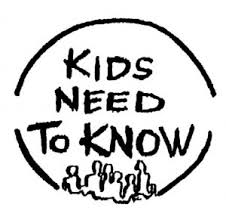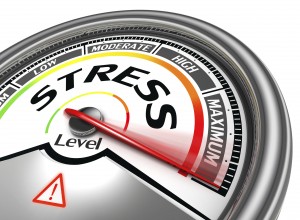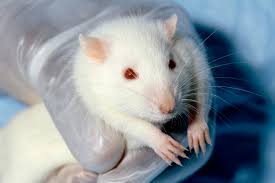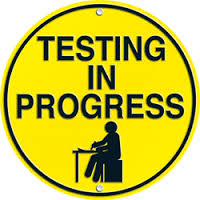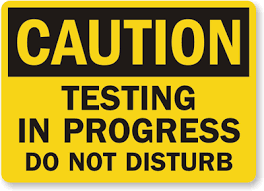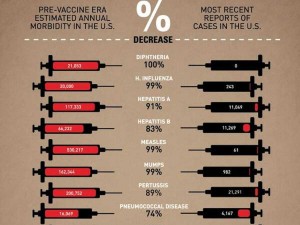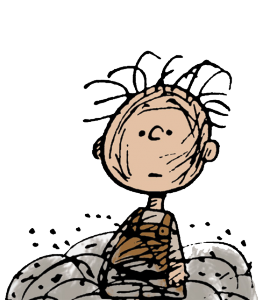
We’ve all heard this debate countless times throughout our high school and college years in America… Which sport is truly “tougher”, American Football (which will now be referred to just as football, sorry internationals) or Rugby? Having played football for 15 years myself, I have heard the massive complaints from Rugby fans or players that Rugby is tougher because they don’t wear any protective padding. Obviously, this always struck me as odd, considering of the countless amounts of hits, injuries, and overall toughness that I have seen over the years as a player, fan, and spectator. Therefore, I thought it would be appropriate to have my first blog post focus on this question I’ve wanted an answer to my entire life. Which sport truly is the toughest out there? In class, we talked about the options presented towards us, so I see two options here. Either rugby causes more injuries, with the lack of pads contributing to a higher injury count, or football causes more injuries due to the added force its players put into hits because they feel better protected with pads. Without a doubt, revese causation is thrown out the window, as you cannot attribute that the injuries cause football or rugby. We’ll also be looking later on why these injuries might happen, or if third parties like the weather cause more injuries.

A massive hit in football, throwing the recipient’s helmet completely off
According to a post by NCAA or the National College Athletic Association, the overall injury rate per every 1,000 athlete exposures (practices included) is 8.1. That may not seem like a lot, but looking at the big picture, there were 41,000 injuries in football per 25 million athletic exposures in just five years. Think about that, 41,000 injuries in FIVE YEARS. That truly is a staggering amount.
How may Rugby compare in this kind of data? Well, according to this powerpoint by the USA Rugby association, the injury rate per 1,000 player exposures for Rugby is about 6.6. Now this, compared to the NCAA statistics shown earlier, may not seem like much, but it does have the upper hand to the 4.4 injury rate per 1,000 player exposures that high school football has, according to the same powerpoint. However, as both are collegiate programs, football does have the upper hand thus far.

A rugby player takes a spear from an opponent, with no padding whatsover
So, in reality, both Rugby and football have a staggering amount of injuries, more than any other sports. And, although it may seem like football has the upper hand right now, you still need to look at where the injuries are taking place to properly see what indeed is the tougher sport.
According to the same NCAA article listed above, a little bit of over 50% of injuries occur in the lower body. These include: Broken legs/toes, stretched/torn ligaments in both of the knees, thighs, and ankles, and also contusions in the same areas. Rugby, on the other hand, only has 16% of their injuries affecting their lower body or brain, according to previously mentioned powerpoint. Therefore, 84% of their injuries involve upper body injuries in some capacity, whether their shoulders, arms, ribs, or any other body parts. In essence, football has the upper hand in lower body injuries and concussions (7.4% on concussions ALONE, with over 45% of concussions not being reported), while Rugby has far more upper body injuries. This makes sense, as the upper body is the most supported in football. However, the shocking thing to me is football players, who wear helmets, have more concussions per exposure than their helmetless counterparts. Likewise, terrifying neck injuries also seem to be more common in Collegiate football than Collegiate Rugby, which goes to show that the padding provided in football isn’t truly making the sport safer. The most common reasoning for the increase of neck and head injuries in football over Rugby is due to the ability for football players to use their upper shoulder pads and helmets to tackle opponents, something Rugby does now allow.
Here’s a brief video clip of some big football hits over the years (viewer discretion advised)
Likewise, here’s a video clip of big Rugby hits (viewer discretion still advised)
So far, we’ve talked about the injuries that, while obviously painful and take a good amount of time to recover from, are not fatal. Other than the brain and neck injuries mentioned, most of these injuries won’t have significant effects on you the rest of your life. However, I don’t think we can firmly make a decision between the two sports until we talk about the worst tragedy in sports…fatalities. In Rugby, fatalities are almost unheard of. Due to the rules of the sport, where tackling below the waist and wrapping the legs to bring people down is common, Rugby offers a much safer environment for brain and neck injuries, as mentioned previously. Unfortunately, you cannot say the same for football. According to this article, there is an average of 12.2 deaths PER YEAR, or about 1 in every 100,000 participants. This doesn’t just come from brain or neck injuries as one might expect, however, as there is also cardiac failure as well as heat exhaustion. Many times during the beginning of the season, kids don’t get enough water in the 100+ degree heat, and pass out, possibly causing their death in the process. A truly horrible circumstance that has happened to too many children in America. The correlation between deaths and football is something that really needs to be focused on.
As we discussed in class, the correlation between injuries and football is not just due to chance, or by a third party. No, there is a direct causation. You play football, you’re far more likely to recieve injuries than if you don’t. So, looking at all of the evidence presented and what they show, it all points to football being the “tougher” (or more dangerous, depending how you look at it) sport. Having the higher rate of injury in the lower body, neck, head, and fatalities give it the upper hand over Rugby. Likewise, football also has more injuries per athletic exposure than Rugby does. Playing for 15 years, I’ve had many broken fingers and toes, a broken nose, three broken ribs, a torn shoulder and bicep, and bad back, and three concussions. I personally know the damage this sport can cause. I believe the reason that football has so many more injuries is actually having pads on. In Rugby, the players know not to tackle with their heads because they don’t have any protection, and likewise don’t hit as hard. Football players often find themselves invincible in pads, and thus throw their entire body behind their hits. That, along with bad timing or bad technique, can cause the serious injuries we’ve seen. Instead of bragging that my sport is indeed tougher, I’m more disappointed at how many injuries football players have to contend with every year. It’s definitely an issue, and steps have been taken in recent years to make it better. However, this isn’t enough, and I hope if I have a son and he plays in the future that he won’t have as many injuries as I did or caused while playing.
Thanks for reading guys!

Images URL’s
https://www.google.com/search?q=smiley+face&tbm=isch&imgil=rYCsy5UdIiK3dM%253A%253BEB-7l6d3ePZ1CM%253Bhttps%25253A%25252F%25252Fen.wikipedia.org%25252Fwiki%25252FSmiley&source=iu&pf=m&fir=rYCsy5UdIiK3dM%253A%252CEB-7l6d3ePZ1CM%252C_&usg=__Gd6bVXx1gnZtpTN_CLAgVXf9kM4%3D&biw=1440&bih=803&ved=0ahUKEwjN4ZuN2uzOAhXEFx4KHeFzCIgQyjcIKw&ei=TVrHV42HFsSveOHnocAI#imgrc=rYCsy5UdIiK3dM%3A
https://i.ytimg.com/vi/llUtLaklAR4/maxresdefault.jpg
https://www.google.com/imgres?imgurl=https%3A%2F%2Frugbywarfare.com%2Fwp-content%2Fuploads%2F2014%2F02%2Fbig-rugby-hit.jpg&imgrefurl=https%3A%2F%2Frugbywarfare.com%2Fmake-perfect-crunching-tackles%2F&docid=U7UMn-uNv50KOM&tbnid=N-83kHBVUj8jFM%3A&w=1284&h=876&bih=741&biw=789&ved=0ahUKEwi-u6-Fk-rOAhUDYyYKHWlJBMsQMwg1KAIwAg&iact=mrc&uact=8
https://www.google.com/url?sa=i&rct=j&q=&esrc=s&source=images&cd=&ved=0ahUKEwjW-YPHl-rOAhXHKCYKHSYJBccQjRwIBw&url=%2Furl%3Fsa%3Di%26rct%3Dj%26q%3D%26esrc%3Ds%26source%3Dimages%26cd%3D%26cad%3Drja%26uact%3D8%26ved%3D0ahUKEwjW-YPHl-rOAhXHKCYKHSYJBccQjRwIBw%26url%3Dhttps%253A%252F%252Fwww.youtube.com%252Fwatch%253Fv%253D-PryGih3p_g%26psig%3DAFQjCNGH1j1B6asQGi6qGy53306sxL4WWw%26ust%3D1472682385459246&psig=AFQjCNGH1j1B6asQGi6qGy53306sxL4WWw&ust=1472682385459246








